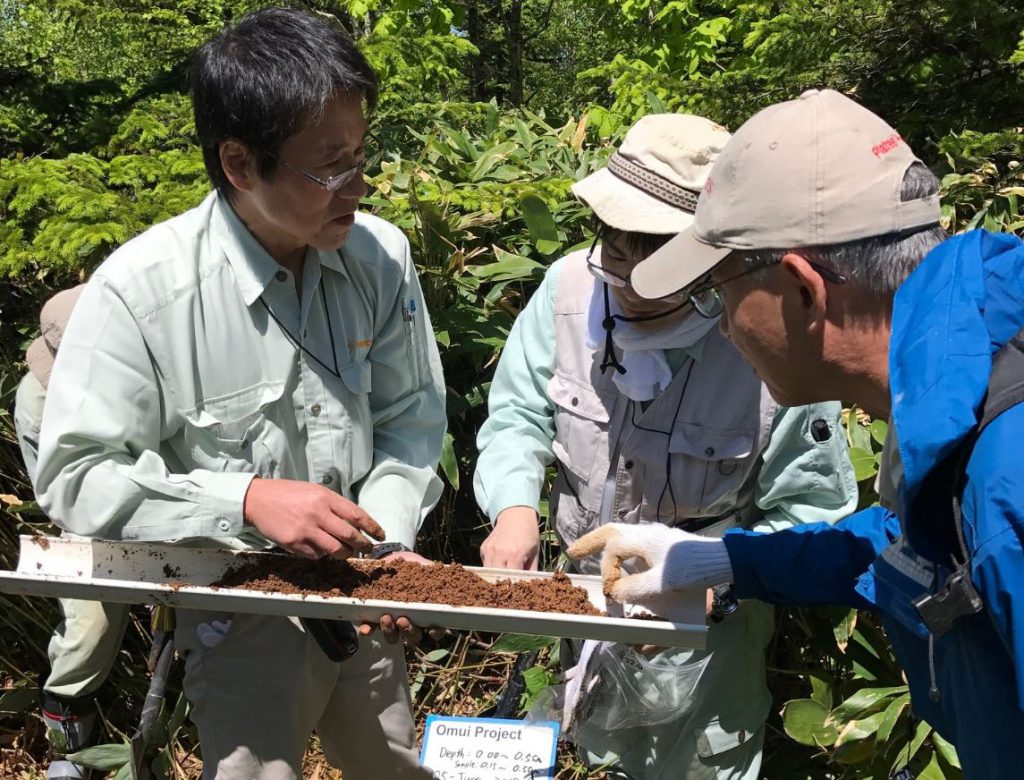Irving Resources drills 12.73 g/t AuEq over 2.72 metres at Omui

Irving Resources Inc. [IRV-CSE] reported that recent drilling at the Omui mine site, part of the 100%-controlled Omu gold project, Hokkaido, Japan, has encountered multiple epithermal vein intercepts.
Omui Mine Site Drilling Summary:
Hole 20OMI-001, collared approximately 70 metres east-southeast of hole 19OMI-010 and oriented at -60 degrees southward, intersected a “Honpi” type high-grade epithermal vein grading 12.59 g/t gold and 12.22 g/t silver (12.73 g/t AuEq) over 2.72 metres beginning 60.0 metres down hole.
This interval includes a higher grade core grading 125.00 g/t gold and 65.90 g/t silver (125.78 g/t AuEq) over 0.25 metres beginning at 62.47 metres down hole. This vein is believed to trend east-northeast with a near vertical dip thus paralleling the historically mined Honpi vein situated approximately 65 metres to the north. If so, true width is estimated at about 50-60% of down hole width.
The lower part of hole 20OMI-001 did not intersect the vein swarm seen in hole 19OMI-010 situated approximately 70 metres west but encountered a very long interval of altered and silicified volcanic rocks with local stockwork silica veining. Based on these observations, Irving believes the veins encountered in hole 19OMI-010 are trending southeast or south-southeast and dip to the southwest meaning that hole 20OMI-001 effectively drilled parallel to and in the footwall of this vein swarm. Assays from the bottom half of hole 20OMI-001 are awaited.
Hole 20OMI-002, the first hole testing the Nanko target situated approximately 700 metres southeast of Honpi, encountered multiple epithermal vein and hydrothermal breccia intercepts in the upper half of the hole. The hole drilled southward at -60 degrees. Some veins display ginguro, bands of silver minerals. The first vein was encountered at 9.5 metres down-hole suggesting that there might be more veins in the immediate vicinity of the drill collar.
Irving believes that a step-out hole positioned north of 20OMI-002 will be needed to confirm this possibility. Multiple vein orientations are observed in the top of hole 20OMI-002, and Irving is modeling this data to gain a better understanding so future drilling can be optimized to further test these veins.
Hole 20OMI-003, collared approximately 230 metres southwest of 20OMI-002 and oriented north-northeast at -60 degrees, is currently in progress. Similar to hole 20OMI-002, hole 20OMI-003 encountered multiple vein and hydrothermal breccia intercepts throughout the hole to its current depth of 327 metres. The first such intercept begins at 16.6 metres down-hole suggesting there is further potential to discover more veins in the immediate vicinity of the drill collar. Multiple vein orientations are observed in the top of hole 20OMI-003, and more study is needed to understand these so that future drilling can be optimized.
Irving has an ongoing drill program at Omui Mine Site that it expects to continue into fall 2020.
“We are very pleased with the numerous veins we have seen in our 2020 drill holes from Omui Mine site,” commented Dr. Quinton Hennigh, director and technical advisor to Irving Resources. “We clearly have a lot going on with vein sets following multiple trends. Although we did not see the same veins in the lower part of hole 20OMI-001 that we saw in last year’s hole 19OMI-010, we can now see that these likely follow a southeast trend and dip southwestward meaning we drilled in the footwall of that vein set. At Nanko, our first two holes, 20OMI-002 and 20OMI-003, have encountered multiple veins, some displaying ginguro, a very good sign. Ultimately, it might be that we find that the veins at the bottom of hole 19OMI-010 near Honpi link up with some of the veins we see at Nanko some 400-700 metres away. Regardless, we have clearly discovered a robust network of epithermal veins on the property.”
Assays from the fourth hole, 20OMS-004, drilled at Omu Sinter earlier this year have been received. This hole, oriented southeastward at an inclination of -60 degrees, encountered a 1.27-metre long vein intercept grading 2.39 g/t gold and 58.34 g/t silver (3.08 g/t AuEq) beginning at 290.73 metres down-hole. Zones of intense silicification and veining were noted deeper in this hole right before a broad zone of fault gouge was encountered at a down hole depth of approximately 388 metres. Irving currently is thinking this silicification and veining may be associated with the targeted vein, but that post mineral faulting has displaced this vein in this area. Irving is currently studying results at Omu Sinter in preparation for follow-up drilling at this important target later in 2020.
The Omu region continues to report no cases of COVID-19 and Irving continues to operate under strict guidelines.
Irving is focused on gold in Japan and holds, through a subsidiary, a Project Venture Agreement with Japan Oil, Gas and Metals National Corporation (JOGMEC), a Japanese government organization.
